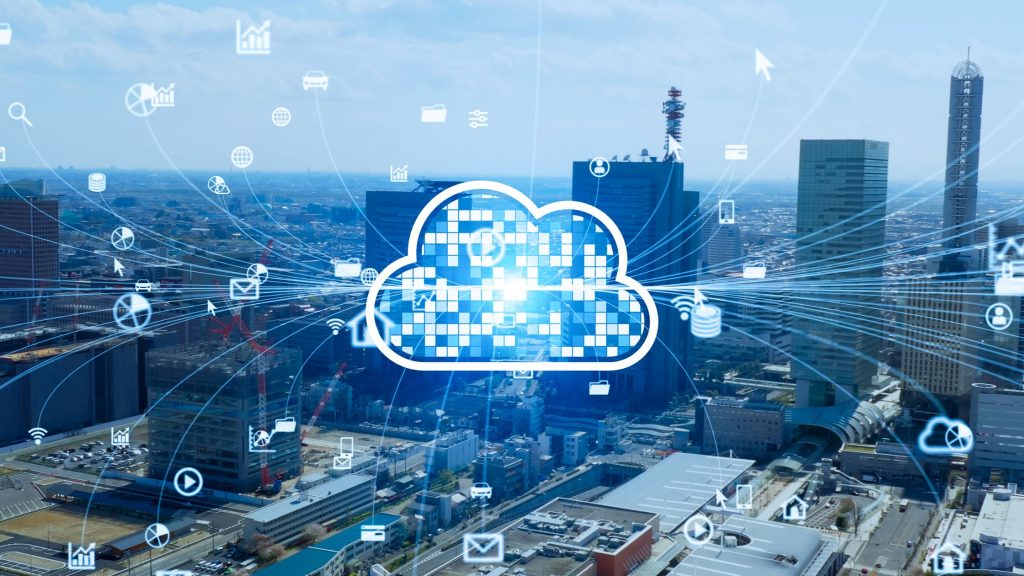Have you ever wondered what cloud computing is? It’s a term that is thrown around a lot, but what does it actually mean? In this blog, we will explore what cloud computing is, the different types of cloud computing, and the various cloud services that are available. After reading this, you will have a better understanding of what the cloud is and how it can benefit you. Read on to learn more!
Introduction
The cloud computing market has been rapidly growing for a while now, and it’s only gotten bigger thanks to the pandemic. But even without a global disease to spur it on, the cloud has been making enormous strides for over a decade.
However, customers can get overwhelmed with the dizzying array of cloud-related terms. That’s why this blog is here to provide you with a handy refresher about the types of cloud computing, cloud services, and the benefits of cloud computing.
Don’t worry – we won’t get too technical. This is more of a refresher for people who’ve had some exposure to the cloud, and an introduction to those who are just joining the party. So let’s begin with the basics on the types of cloud computing.
Table of Content
- Overview of Cloud
- Types of Cloud Services
- Types of Cloud Computing
- How Are the Various Cloud Computing Types the Same?
- How Do the Cloud Computing Types Differ?
Overview of Cloud
The cloud is often thought of as being an intangible or ethereal concept, however the digital cloud is in fact very real and consists of a physical and virtual network infrastructure that hosts all the provider’s data and services.
This physical infrastructure is made up of servers, storage, networking equipment and more that are all housed in data centers. The virtual infrastructure consists of the software, platforms and services that run on the physical infrastructure.
Customers can access server-based cloud networks and their resources, including data storage, online streaming content (e.g., YouTube, Netflix, etc.), and infrastructure platforms like Google Cloud, AWS, or Azure, through the internet.
Types of Cloud Services
There are three primary cloud services that are hosted by third-party providers and offered to customers through the Internet. These services expedite user data flow from front-end clients via the Internet to the cloud provider’s systems, and then back again. However, each cloud service performs these functions differently.
- IaaS:
This acronym is for Infrastructure as a Service. With this cloud service, the provider manages the entire infrastructure, including data storage, servers, networking, and virtualization. Customers can access the service with a dashboard or API.
This means that users are responsible for the operating system, applications, and middleware, while the provider takes care of the hardware, including hard drives, data storage, and servers. If there are any issues with the hardware or repairs needed, the provider will take care of it. - PaaS:
PaaS, or Platform as a Service, is a cloud-based platform that offers and manages hardware and software while the user manages apps and data. This type of arrangement is favoured by DevOps specialists and programmers because it frees them from having to build and maintain the infrastructure themselves. - SaaS:
SaaS, or software as a service, is a type of subscription software that allows users to access and use web-based applications and mobile apps through a web browser. SaaS providers typically manage maintenance, bug fixes, and software updates for their users. Some popular examples of SaaS include Dropbox, ZenDesk, HubSpot, Slack, Salesforce, cloud-based Microsoft Office 365, Adobe Creative Cloud, and MailChimp.
One of the main advantages of SaaS is that users don’t have to directly install the software onto their own computers or devices. This can save time and hassle for both users and IT staff.
Types of Cloud Computing
There are many different types of cloud computing:
- Public Clouds:
A public cloud is a virtual environment that is partitioned and redistributed to many customers. These customers are often referred to as “tenants.” These clouds are usually created from IT infrastructures that the customers don’t own. Some of the most popular examples of public cloud computing include Amazon Web Services (AWS), Google Cloud, Microsoft Azure, Alibaba, and IBM.
Although public clouds are typically run off-site, some cloud providers have begun offering customers cloud services that reside in the clients’ on-site datacenters. This blurs the lines of ownership distinctions and locations. - Private Clouds:
As the name suggests, a private cloud is a cloud environment that is only accessible to a specific group or individual. This type of cloud is usually located behind a firewall and is not available to the public. Some examples of private clouds include HPE, VMWare, IBM/Red Hat, and OVHcloud.
Nowadays, private clouds don’t have to be limited to on-site IT infrastructures. Clients can also build private clouds on off-site data centers that are owned by vendors. As a result, private clouds now have two sub-categories:
a) Dedicated Clouds: This is a cloud within another cloud, located either in a public or private cloud. For example, an organization’s Research and Development branch could have a dedicated private cloud in the company’s private cloud.
b) Managed Private Clouds: These clouds are configured, deployed, and managed by a third-party vendor but created and used by customers. Managed private clouds are ideal for organizations that lack the resources for an entire IT staff to run their cloud infrastructure and services. - Hybrid Clouds:
Hybrid clouds are a single IT environment that consists of multiple physical settings and/or cloud-based settings that are linked together. This could include anything from application programming interfaces (APIs) and virtual private networks (VPNs) to local area networks (LANs) and wide area networks (WANs).
Even though there isn’t a single, accepted definition of what qualifies as a “hybrid” cloud, the requirements and characteristics are highly variable depending on who you ask.
Here’s a list of possible traits:
a) Two or more private clouds
b) Two or more public clouds
c) At least one private cloud and public cloud
d) A virtual or bare-metal environment connected to at least one private or public cloud
But whatever definition you use, it is safe to say that any type of cloud system gets classified as a hybrid when applications can move between different yet connected environments. Some of the environments must be derived from scalable, consolidated IT resources. Furthermore, all the environments must be managed through a single environment via an integrated management and orchestration platform.
- Multi-Clouds:
Multi-clouds are composed of multiple cloud services from more than one cloud vendor. All hybrid clouds are multi-clouds, but the same cannot be said in reverse. However, if multiple clouds are connected through a process of orchestration or integration with third-party tools, then they become hybrid clouds.
How Are the Various Cloud Computing Types the Same?
Regardless of the type of cloud computing you use, there are common characteristics in each. Here’s a list of features usually found in every type of cloud computing:
- On-demand self-service: Organizations can provision without involving the provider.
- Broad network access: Cloud services are available through a network such as the Internet or a local area network (LAN), and can be accessed by many different customer platforms.
- Multi-tenancy and resource pooling: Multiple customers access the same physical resources.
- Rapid elasticity and scalability: Cloud computing resources can be quickly scaled up or down rapidly and, sometimes automatically, in response to the business’s demands.
- Measured service: The service provider monitors, measures, and reports cloud resource usage, reflecting the “pay for what you use” pricing model.
How Do the Cloud Computing Types Differ?
The best way to understand the differences would be with Advantages & Disadvantages:
Advantages:
- Public Cloud:
# Cost-effective
# Highly scalable
# The cloud service provider manages it
# Not bound by geographical restrictions
- Private Cloud:
# Best level of security
# Greater autonomy over the servers
# Very customizable
# No risk of sudden potentially disruptive changes by provider
- Hybrid Cloud:
# More secure than public cloud
# Very secure
# Very flexible
# Cost-effective
Disadvantages:
- Public Cloud:
# Users have fewer customization options
# Users are at the mercy of changes made by provider
# Lesser server autonomy
# Less secure due to shared server
- Private Cloud:
# Comparatively expensive
# Organization needs experienced IT personnel to run things
- Hybrid Cloud:
# Possible communication conflicts between public and private cloud elements
# Higher startup costs for private cloud elements
# Potentially complicated to implement
Conclusion
We hope you enjoyed our blog post on what is cloud computing. One thing that is clear is that we are all in the cloud computing age. Cloud computing is a rising industry which is here to stay.
If you want to learn cloud computing then you can check-out the various cloud computing training courses available at TopD Learning, and if you have any queries or doubts regarding cloud computing, online training or career related then simply contact us and we’d be happy to help.
Hope you’ve enjoyed this blog and we’ll continue delivering valuable content regularly. Thanks for reading.


